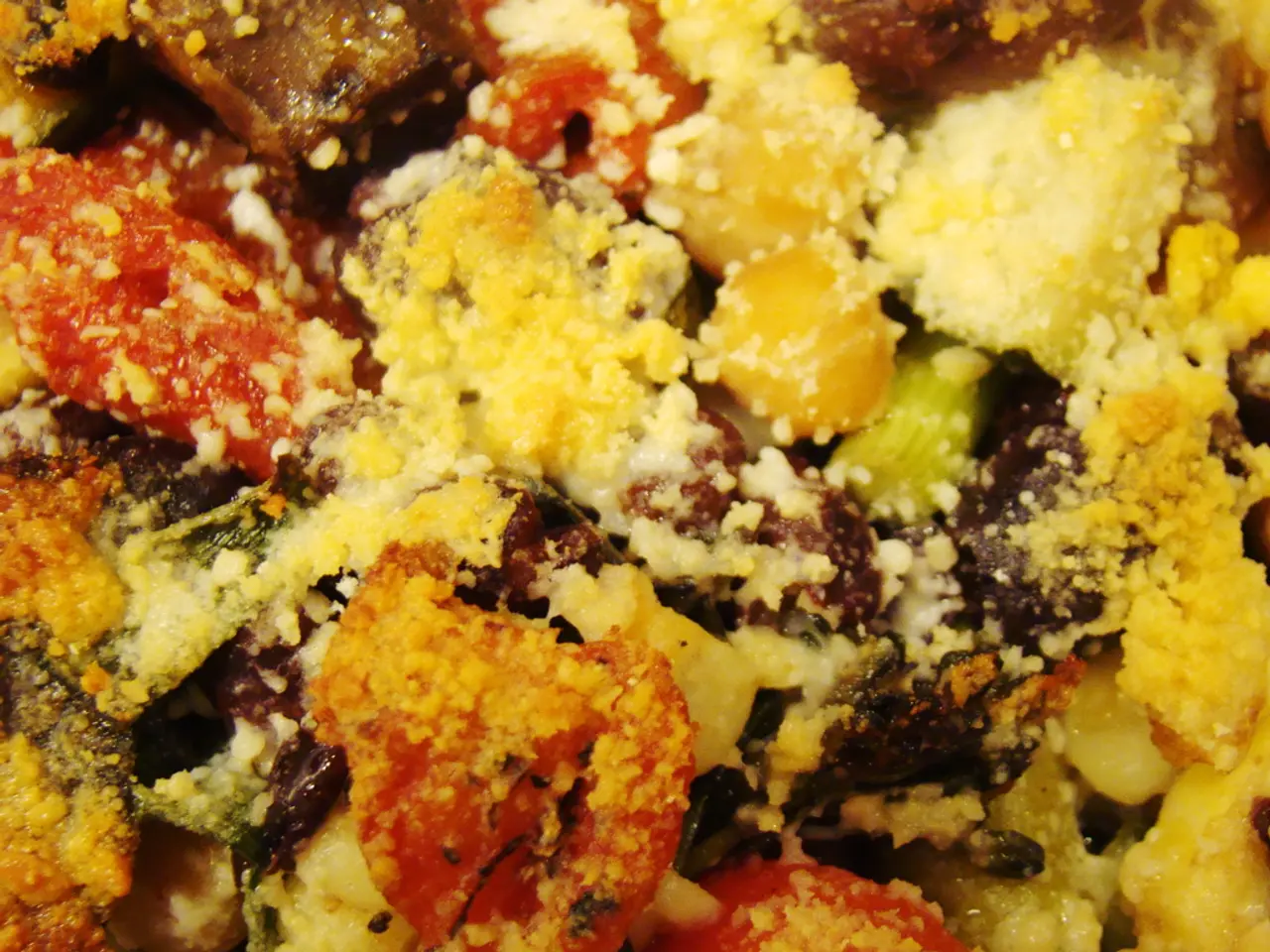Easy, homemade dishes for your little one's delight
In the world of toddler nutrition, creating meals that are both delicious and nutritious can be a challenge. However, with a few strategic tips and tricks, parents and caregivers can make mealtime a delightful experience for both toddlers and adults alike.
One such strategy is the preparation of individual cauliflower cheese 'cakes' for toddlers, while adults enjoy traditional cauliflower cheese. This dual approach caters to both age groups, ensuring everyone enjoys their meal.
Another key aspect is the inclusion of omega-3 rich fish like salmon in a toddler's diet, aiming for at least two servings a week. Chickpea fritters, which can be prepared in just 20 minutes and make multiple servings, are another great option. These can be frozen for future meals, making meal prep a breeze.
Interactive elements, such as chicken satay on lolly sticks, have been shown to increase consumption in toddlers. The visual appeal of meals matters more to toddlers than adults realize, as they eat with their eyes first. Recognizable shapes, like fish fingers, can also reduce anxiety and make these meals more appealing.
The secret to introducing new foods to toddlers lies in texture progression and flavor layering. Our ancestors' preference for sweet foods has influenced childlike behavior concerning the acceptance of new foods. Today, this innate preference for sweetness may misguide conventional child nutrition advice. Instead, a focus on natural food openness is more beneficial.
Successful toddler feeding starts with strategic meal preparation, including batch cooking with smart portioning. Family-style meals reduce pressure and increase acceptance of new foods for toddlers. Pasta with hidden vegetable sauce is a reliable fallback option, while mild curry flavors during the period between 6 months and 2 years create lifelong acceptance of these flavors.
Repeated exposure without pressure is more effective than forced eating for toddlers. Hidden vegetables work, but visible vegetables work better long-term for toddlers. A vegetable omelette, prepared in just 10 minutes, is a quick and easy way to incorporate various available vegetables into a meal.
Toddlers who are introduced to diverse flavors and textures during their peak hunger window are 73% more likely to maintain adventurous eating habits throughout early childhood. Courgette and pea risotto adapts to dietary restrictions and preferences, making it a versatile option for all families.
Lastly, remember that the first 30 minutes of a toddler's mealtime determines whether they'll accept new foods for the next six months. Egg-based dishes are nutritional powerhouses for developing toddlers, providing the necessary nutrients for growth and development.
By following these tips and tricks, parents and caregivers can make mealtime a enjoyable and nutritious experience for toddlers, fostering a lifelong love for good food.






